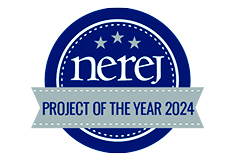News: Spotlights
Posted: February 9, 2010
Don't let toxic mold darken your doorstep
Toxic mold has become the "headache du jour" for property owners and managers, just as lead paint and asbestos were in their day. Toxic mold, also known as Toxic Black Mold, is not only an issue for residential and commercial properties in flood areas, but for all properties since it can also develop from minor water releases due to plumbing failures, conductive condensation and water leaks to name a few.
Mold is a simple organism that spreads by emitting airborne spores that spread inside wall cavities, in attics, behind cabinets and wallpaper, and through ventilation systems. When moisture and temperature conditions are favorable, widespread contamination can occur in a surprisingly short time.
Though many people are unaffected by mold spores, others suffer an allergic reaction or exacerbation of asthma symptoms in a similar manner that pollen, dust or animal dander cause in an adverse respiratory reaction. In the more serious case, a person with a depressed immune system can be susceptible to a variety of respiratory ailments, nose bleeds, headaches and memory loss.
To reduce the possibility of mold in buildings, a written maintenance program should be established to include scheduled inspection for water leaks, problem seals around windows and doors, as well as checks for visible mold in moist or damp parts of the building. It is important to establish an alliance between the property's management staff and residents so that conditions that require attention are identified and dealt with promptly. Any conditions that could be a possible cause of mold or fungi growth should be corrected to prevent possible problems in the future.
Although mold is now typically excluded under standard property and liability insurance policies, limited coverage may be found under property or liability policies in the event of a claim involving mold at an insured building. In addition, more comprehensive mold coverage may be available under a pollution portfolio policy frequently purchased by owners of multiple buildings.
Lisa Hartman, ARM is the director of claims and loss management at Albert Risk Management Consultants, Needham, Mass.
Tags:
Spotlights
MORE FROM Spotlights
The New England Real Estate Journal presents the First Annual Project of the Year Award! Vote today!
The New England Real Estate proud to showcase the remarkable projects that have graced the cover and center spread of NEREJ this year, all made possible by the collaboration of outstanding project teams. Now, it's time to recognize the top project of 2024, and we need your vote!








